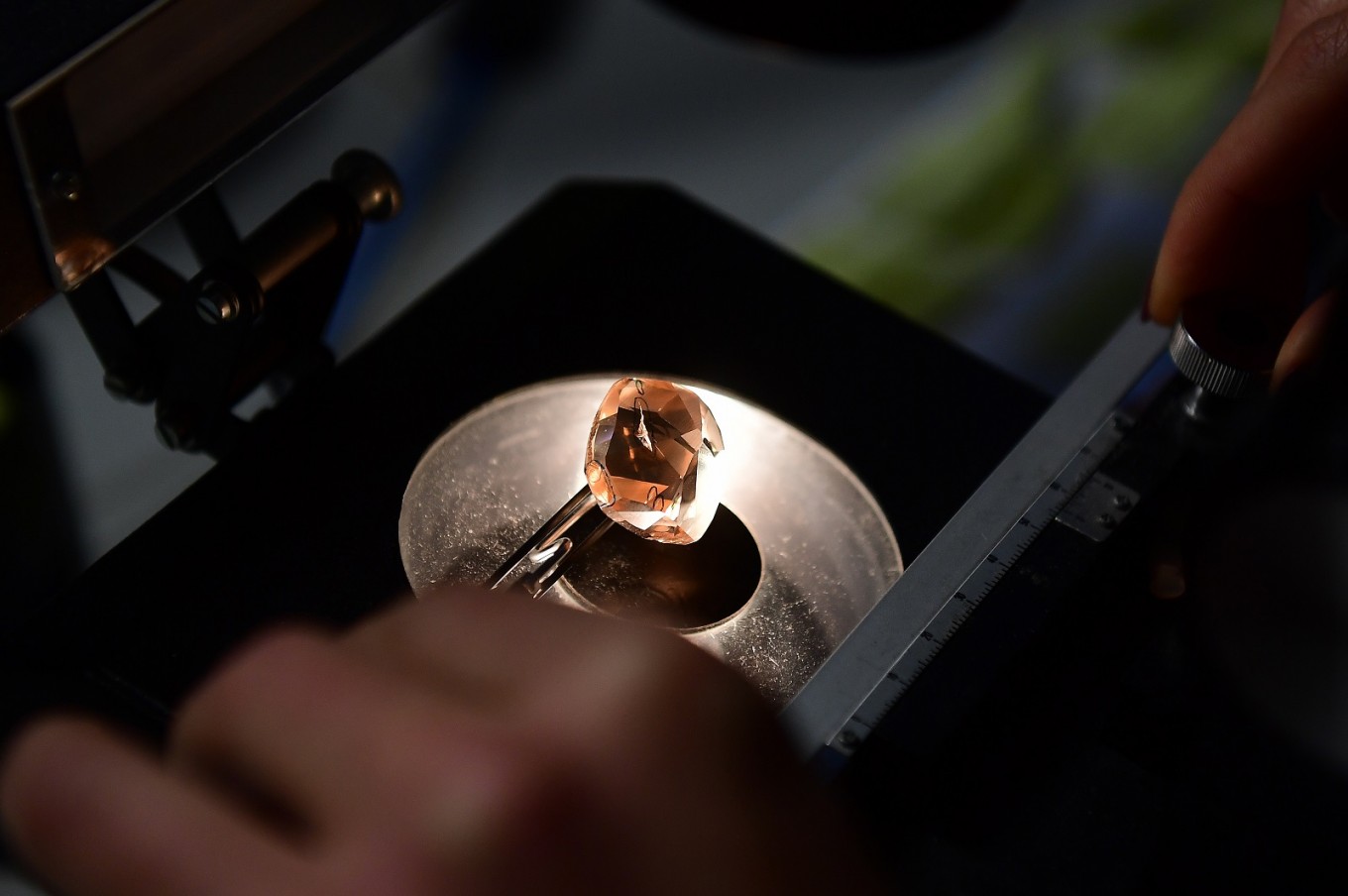Popular Reads
Top Results
Can't find what you're looking for?
View all search resultsPopular Reads
Top Results
Can't find what you're looking for?
View all search resultsAfter 130 years, De Beers will sell synthetic diamonds
Change text size
Gift Premium Articles
to Anyone
 A diamond expert studies a diamond under an electronic microscope at Simply Sparkling, a company specialized in advanced technological diamond manufacturing, transforming rough diamonds into polished stones, in Antwerp. Sparkling new diamond rings will grace many fingers around the world on Valentine's Day -- and most of those gems will have passed through a drab district in the Belgian port city of Antwerp. A diamond hub for nearly 600 years, Antwerp is holding its own as the global trade capital for the precious stones despite new rivals in the Middle East and Asia, traders there say. (AFP/Emmanuel Dunand)
A diamond expert studies a diamond under an electronic microscope at Simply Sparkling, a company specialized in advanced technological diamond manufacturing, transforming rough diamonds into polished stones, in Antwerp. Sparkling new diamond rings will grace many fingers around the world on Valentine's Day -- and most of those gems will have passed through a drab district in the Belgian port city of Antwerp. A diamond hub for nearly 600 years, Antwerp is holding its own as the global trade capital for the precious stones despite new rivals in the Middle East and Asia, traders there say. (AFP/Emmanuel Dunand)
F
or the first time in its 130-year history, De Beers will sell diamond jewelry made in a lab rather than underground over billions of years.
The move is a historic shift for the world’s biggest diamond miner, which vowed for years that it wouldn’t sell stones created in laboratories. The diamonds will be marketed in the US under the name Lightbox, a fashion jewelry brand, and sell for a fraction of the price of mined gems.
The strategy will create a big price gap between mined and lab diamonds and pressure rivals that specialize in synthesized stones. A 1-carat man-made diamond sells for about $4,000 and a similar natural diamond fetches roughly $8,000. De Beers new lab diamonds will sell for about $800 a carat.
“Lightbox will transform the lab-grown diamond sector by offering consumers a lab-grown product they have told us they want but aren’t getting: affordable fashion jewelry that may not be forever, but is perfect for right now,” said Bruce Cleaver, chief executive officer of De Beers.
Fun, Pretty
“Our extensive research tells us this is how consumers regard lab-grown diamonds – as a fun, pretty product that shouldn’t cost that much – so we see an opportunity,” he said.
There’s been increasing concern in the industry that expensive diamonds aren’t appealing to millennial consumers, who are often more likely to spend on high-priced electronics or vacations. Diamonds have also come under fire for environmental and human-rights concerns related to mining in poor communities in Africa.
Unlike imitation gems such as cubic zirconia, diamonds grown in labs have the same physical characteristics and chemical makeup as mined stones. They’re made from a carbon seed placed in a microwave chamber and superheated into a glowing plasma ball. The process creates particles that can eventually crystallize into diamonds in 10 weeks. The technology is so advanced that experts need a machine to distinguish between synthesized and mined gems.
Man-Made Gems
While De Beers has never sold man-made diamonds before, it’s very good at making them. The company’s Element Six unit is one of the world’s leading producers of synthetic diamonds, which are mostly used for industrial purposes. It has also been producing gem-quality stones for years to help it tell the difference between natural and man-made types and to reassure consumers that they’re buying the real thing.
Man-made gems currently make up a small part of the $80 billion global diamond market, but demand is increasing. Global diamond production was about 142 million carats last year, according to analyst Paul Zimnisky. That compares with lab production of less than 4.2 million carats, according to Bonas & Co.
The move also comes at a sensitive time for De Beers and its relationship with Botswana, the source of three-quarters of its diamonds. The two have a sales agreement that gives De Beers the right to market and sell the diamonds from Botswana. The deal, which gives De Beers its power over global prices, will soon be up for negotiation and Botswana is likely to push for more concessions.
For example, last time the two sides negotiated, De Beers agreed to move all its sales staff from London to Botswana. In the talks, one of De Beers’s levers is the threat of synthetics to Botswana’s economy.
On Tuesday, De Beers said it had extensive talks with Botswana about the decision to sell man-made diamonds and the country supports the move.









